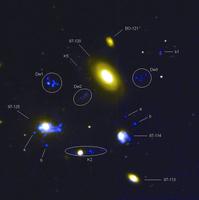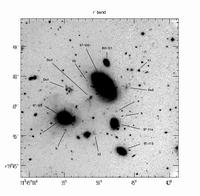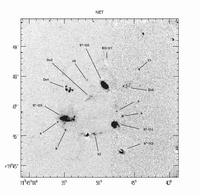|
Authors:
G.Gavazzi, L.Cortese, A.Boselli, J.Iglesias-Paramo,
J.M.Vilchez & L.Carrasco
|
|
Abstract:
The discovery of a striking astrophysical laboratory in the
cluster of galaxies Abell 1367
(Sakai et al. 2002) is confirmed with independent imaging and spectroscopic observations
and further investigated in the present analysis. Two giant and ten dwarf HII galaxies,
members to a group, are simultaneously undergoing a burst of star formation. Redshift
measurements suggest that the group galaxies are in the process of falling into the
cluster at very high speed. We explore two possible mechanisms that could have triggered
the short-lived stellar burst we are witnessing: the first, internal to the group itself,
via tidal interactions among its members, the hypothesis favoured by Sakai et al. (2002);
the second associated with the high velocity infall of the group galaxies into the
cluster intergalactic medium. We present evidences in favour and against the two hypotheses.
|





